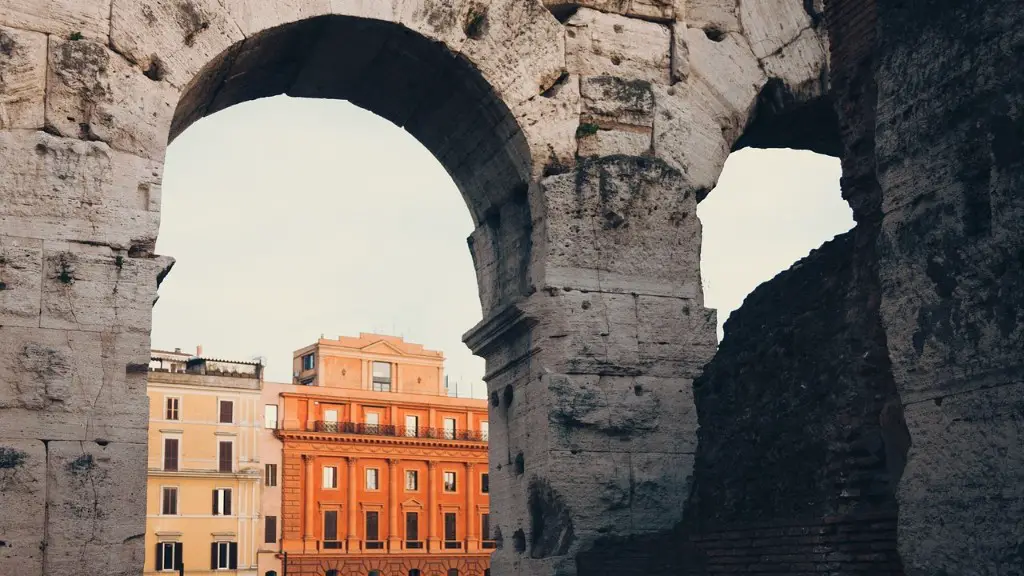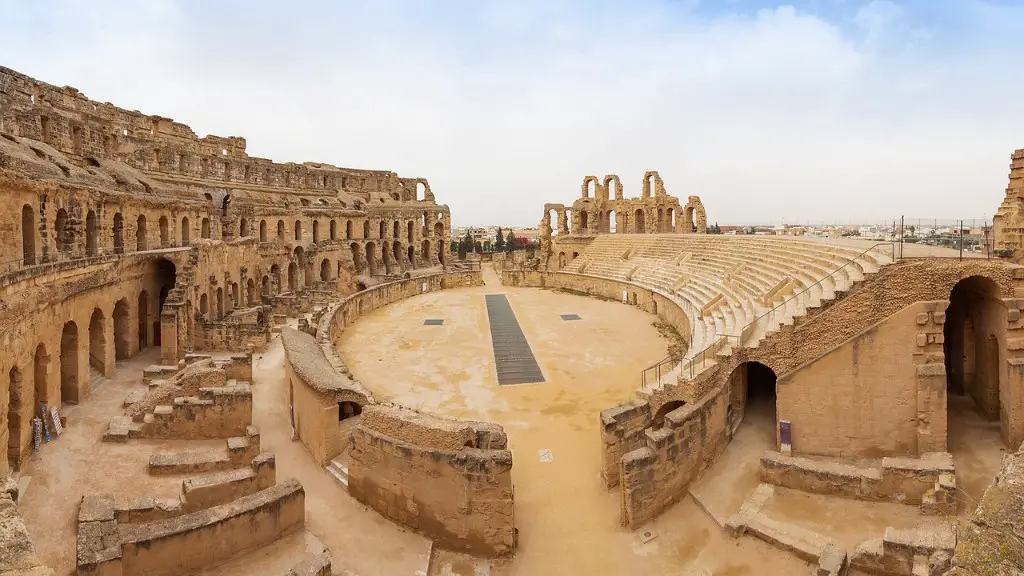Food
Daily life in Ancient Rome was centred around food, and day-to-day cooking revolved around a range of grains. Bread, porridge, and pancakes from millet, wheat and barley, flavoured with spices and nuts, were staples for the common people, and for the wealthier classes, various meats like pork and mutton, fresh fruits and vegetables were available. Fish was especially popular near the coast, and wild game like hare, deer, and boar would appear on the tables of the wealthy. Romans often ate in special dining rooms, usually around a four-legged table, with beautifully painted walls and marble floors. The room would be filled with the sound of slaves, who served food and carried out household tasks. Wine was drunk with meals, and sometimes served with water from an ornate fountain, known as a balneum. Food in Ancient Rome was plentiful due to the fact that the city was able to access food from neighboring lands.
Clothing
Clothing in Ancient Rome varied depending on one’s social standing and resources. Wealthy citizens in Ancient Rome often wore finely woven togas, while the lower classes tended to wear looser garments such as tunics. Clothes were often dyed in vibrant colors, making the outfits very ornate. Most people had a variety of pieces of clothing in their wardrobe since they often changed their clothing daily. Shoes were made of leather, and sandals were popular in the warm weather months. Roman clothing was simply designed, but even the poorest citizens tended to have a few pieces of jewelry. Gold, silver, pearls, and gemstones were all popular accessories.
Transportation
Most people travelled on foot within the city, but those who did own animals like horses and mules used them for transportation. Wealthier citizens also used chariots when travelling outside of the city, as horses and chariots were seen as a sign of wealth and prestige. Rome had an extensive system of roads connecting the city with the provinces and other cities in the Roman empire. The roads were well-maintained by the government, and some were even paved with stone. Roman engineers were also responsible for the development of bridges, and the aqueducts which carried water throughout the city.
Entertainment
Entertainment in Ancient Rome could range from athletic competitions to theatre performances. Gladiatorial contests were among the most popular events, featuring battles between men and exotic animals, which were often extremely violent. Chariot racing and theatre performances were also hugely popular, and were often attended by the wealthiest citizens. Public festivals were also an important part of Roman life, and the citizens would celebrate religious occasions with grand parades and feasts.
Education
Education in Ancient Rome depended largely on one’s social standing. Wealthy citizens could afford private tutors, whilst poorer citizens who could not afford private tutors would attend free public schools provided by the government. Education was an important part of Roman life, and by the fourth century, Rome even had universities, offering higher education to its citizens. Roman education focused mainly on literature, philosophy and rhetoric, and education was considered a vehicle for achieving success and power.
Law and Politics
Ancient Rome was highly organized, governed by a complex set of laws and regulations. Though not a democracy as we know it today, Rome was a highly structured society with its own government, laws, justice system and taxation system. This helped to ensure the city’s smooth functioning, and allowed its citizens to live in relative safety and peace. Rome was also a great military power, and its army was responsible for many of its conquests and successes. Citizens were involved in politics and were even allowed to vote on important issues.
Religion
Religion was a major part of Roman life, and the citizens devoted much of their time to worship and celebration. Roman Gods were closely linked to the city’s progress and prosperity, and worshipping them was believed to bring good fortune. Roman religion was polytheistic, and the citizens worshipped a range of Gods, with each God associated with a different aspect of life. The chief God, Jupiter, was responsible for protecting the city and its people. Religion was so important to the citizens of Ancient Rome that even the smallest of towns had its own temple and priests.
Family Life
Family life in Ancient Rome was considered an important part of society, and the family unit was highly respected. The father or head of the family was in charge, and his word was law. All members of the family, including slaves, were expected to obey him. Marriage was seen as an important part of Roman life, and most individuals were expected to get married and have children. Marriage was a legal contract and the husband was responsible for the wellbeing of the entire family. Families often lived together in one house, and children were brought up with the same values and beliefs that their parents had.


